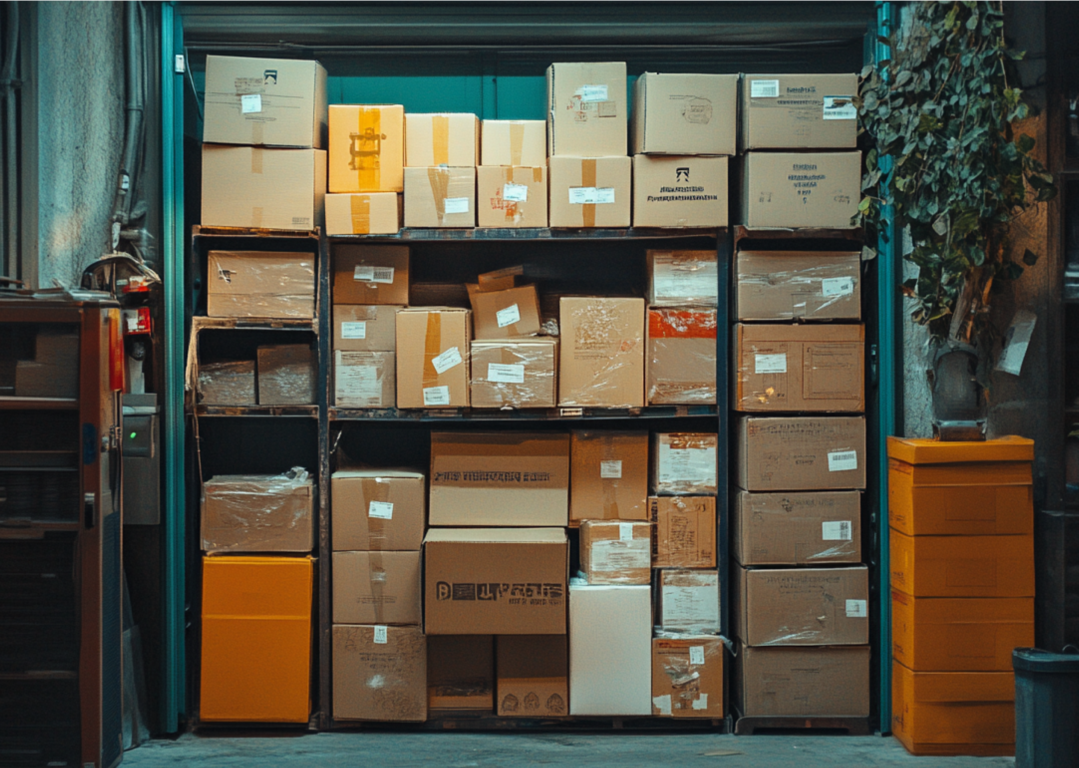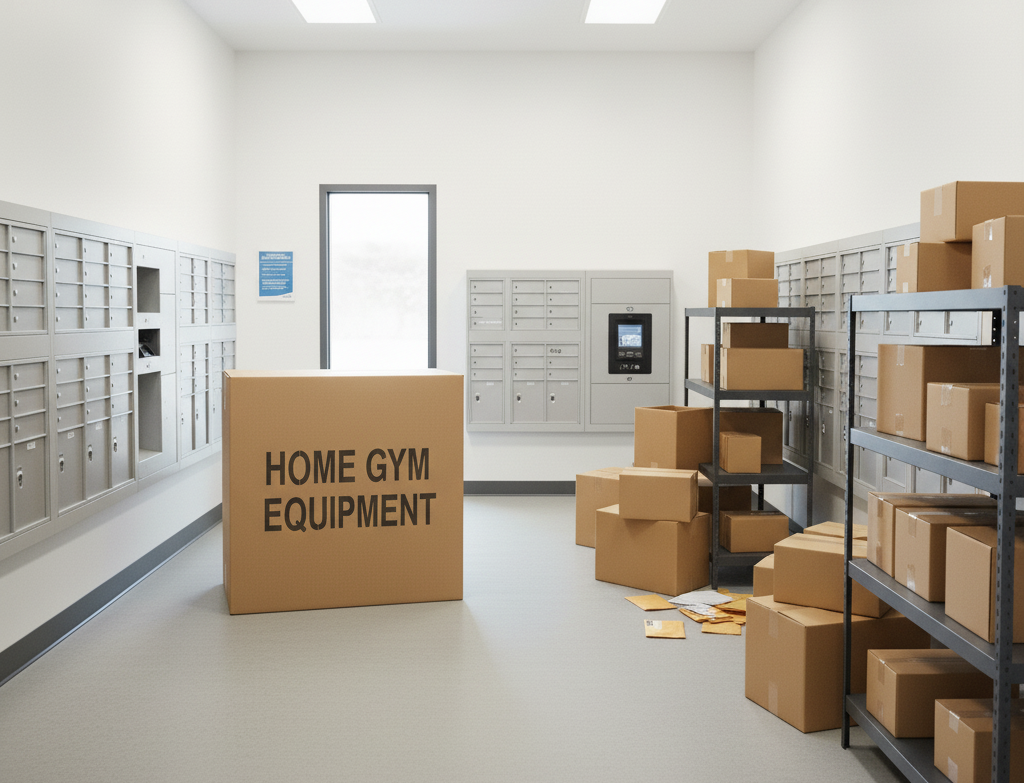What is Undeliverable as Addressed (UAA) Parcels?

The massive volume of parcels flowing into facilities today has revolutionized the modern mailroom. Yet, lurking within this challenge is the costly problem of Undeliverable as Addressed (UAA) Mail. While the term uses "Mail," it applies to all items, from letters to the bulkiest boxes, that can’t be delivered due to address issues.
For facility managers and mailroom management staff, UAA is more than just a yellow sticker. It's a massive, resource-sapping headache. Industry estimates indicate that the total cost of UAA and poor address quality to the mailing industry as a whole is approximately $20 billion annually. When you consider the extra time, space, and security risks associated with processing a returned package versus a returned letter, you realize UAA for parcels is a bigger crisis for your inbound logistics operation.
What are the Root Causes of Parcels Becoming UAA?
The reasons a package ends up being UAA generally fall into two categories. Understanding these causes is the first step in effective parcel management.

Address Data Problems
These are the most common reasons why parcel deliveries fail, and they stem from faulty or outdated recipient data:
- Incorrect, Incomplete, or Insufficient Address: The classic issue. This includes missing or misspelled street names, incorrect building numbers, or, most frequently, a missing apartment, unit, or suite number.
- Recipient Moved, Left No Address (COA): The recipient has relocated but failed to file a Change of Address (COA) with the carrier or, more importantly, failed to update the internal facility directory that the mailroom relies on.
- Addressee Unknown: The recipient is completely unfamiliar to the carrier or staff at the address.
Last-Mile & Package-Specific Issues
These causes are highly specific to parcel delivery and often occur after the item has reached the final delivery area:
- Package Refused or Unclaimed: The recipient refuses to accept the package (often because they didn't order it) or, crucially for facilities, they were unavailable to receive it, or the mailroom had no secure place to leave it.
- Damaged/Illegible Label: The address label or tracking barcode is torn, smudged, or wet during transit, preventing the final last-mile delivery scan.
- Damaged Package Contents: A carrier may flag a package as undeliverable if the exterior is so severely damaged that the contents are compromised.
How are UAA Parcels and Packages Handled?
When a parcel delivery fails, the process is usually simple, brutal, and costly. The item is sent back.
The Return Process (RTS)
For most private carriers (FedEx, UPS, DHL) and many USPS package services, the primary disposition for a UAA package is Return to Sender (RTS). The package is physically rerouted back to the originator. Crucially, the carrier usually affixes a sticker with a UAA reason code (e.g., "Attempted, Not Known," "Insufficient Address"). Mailroom staff must capture this code to begin the address correction process.
Forwarding vs. Returning
Unlike First-Class letters, forwarding rules are inconsistent or non-existent for many parcel services. Forwarding may be possible for some USPS Priority Mail pieces, but for most ground and economy packages, the default is RTS.
Secure Disposal
If an item is low-value, non-returnable, or sits unclaimed for too long, it must be properly disposed of. Given that packages can contain sensitive medical information, electronics, or other confidential items, facility mailroom staff must implement clear, secure, and auditable disposal protocols to mitigate compliance and security risks.
What are the Costs of UAA on Your Facility's Package Flow?

The failure to manage UAA effectively is an immediate drain on a facility’s budget, space, and staff morale.
- Storage & Facility Space: This is the most visible cost. A returned letter takes up minimal space; a returned appliance, case of wine, or promotional box requires significant floor space on the receiving dock or in the mailroom. Returned packages quickly create clutter, presenting a major facility constraint.
- Wasted Staff Time: Every returned package requires manual administrative work: logging the return, researching the recipient, contacting the sender, and physically re-labeling and sending it back out. This high labor cost severely impedes the primary duty of inbound package management.
- Security & Compliance Risk: Returned packages may contain confidential data (HIPAA forms, financial statements, proprietary parts). When left unlogged and unmanaged in a pile, they become a security liability and a compliance violation waiting to happen.
- Negative Recipient Experience: The final impact is felt by the customer. A failure to deliver a critical part, an ordered item, or an important document leads to frustration, lost trust, and ultimately, a perception of poor service quality.
Best Practices for Minimizing UAA in the Mailroom
You don’t need to hire more people to address UAA in your mailroom. What you need is better data and automation. Your mailroom management strategy needs to focus on prevention and efficient recovery.
Recipient Data Management
The best UAA is the one that never happens.
- Enforce Address Verification: Establish an internal policy that requires the mailroom or property management team to verify the delivery address, including unit numbers and spellings, immediately upon a resident or employee entering the system.
- Regularly Audit Databases: Implement a routine schedule for checking and cleaning your internal recipient directory against actual move-in/move-out data.
Digital Workflow for Returned Packages
Once a package is marked UAA and returns, don't let it become a black hole.
- Digitize the Return: Use a dedicated parcel tracking system to log every returned package, capturing the carrier's UAA reason code digitally. This data is priceless for correcting your internal database.
- Automate Notifications: Instead of relying on manual emails, automate notifications to the internal department (or the sender) responsible for the original item, ensuring the address is updated before the next piece is sent.
Communicate, Communicate, Communicate

A system that keeps the recipient informed prevents many last-mile UAA causes. By immediately scanning and notifying recipients of an inbound delivery or attempted delivery, you minimize the chance of "Recipient Unavailable" or "Refused" returns.
Your Solution to Package UAA
If your mailroom is struggling with the high costs, wasted time, and storage nightmares of returned packages, it’s time to move past paper logs and clipboards. A modern, automated system is the only sustainable answer to effective mailroom management and controlling the tide of UAA. Solutions like Parcel Tracker centralize your recipient data for immediate validation, streamline internal delivery notifications, and efficiently log every item.






